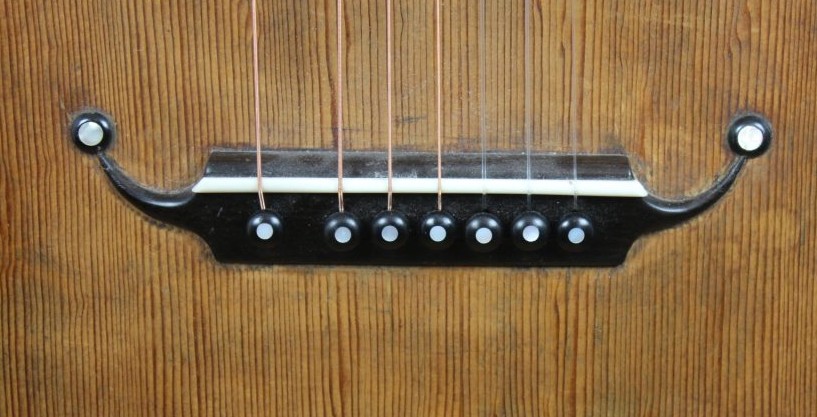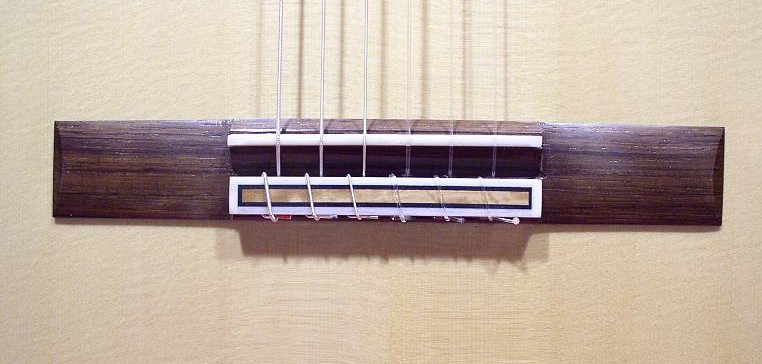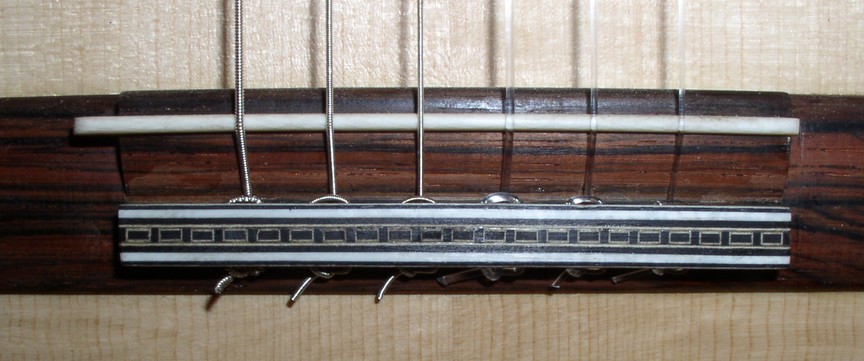When I started building in 1970, all tie blocks that I ever saw on classical guitars had 1 hole per string. It dawned on me then that there were other other options. For instance, pegs could hold down the strings, like on steel strings (or like many early 19th century guitars). Another idea occurred to me back then (1970, not the early 19th century): there could be more than one hole per string.

Now it’s very common for tie-blocks to have multiple holes (2 or 3) per string. The first guitar I saw with 2 holes was one played by Marc Teicholz I believe in the early 1990s. So many builders have been using the two hole tie block for the last 30 years, I don’t know who gets credit for using it first. But I like how it looks (below).

Or 18 holes!

Perhaps one asks, why not just 6 holes? Well, there can be a downside to the 6 hole bridge. Mainly that the way the string wraps around itself can cause it to lower the angle that the string takes over the saddle (than piece of bone).
Six Holes Revisited
Over the years I have found that there are also problems associated with the 12 and 18 hole tie-block bridges. The problems can be avoided, but sometimes are no fun. Also, more holes to drill means more work. (OK. I’m not lazy, just efficient. 🙂 So nowadays mostly do 6 hole tie-blocks. I think it’s easy to make for me, and easy for players to use. So that is why I made this video. It shows how to securely tie the strings on a 6 hole tie-block.
